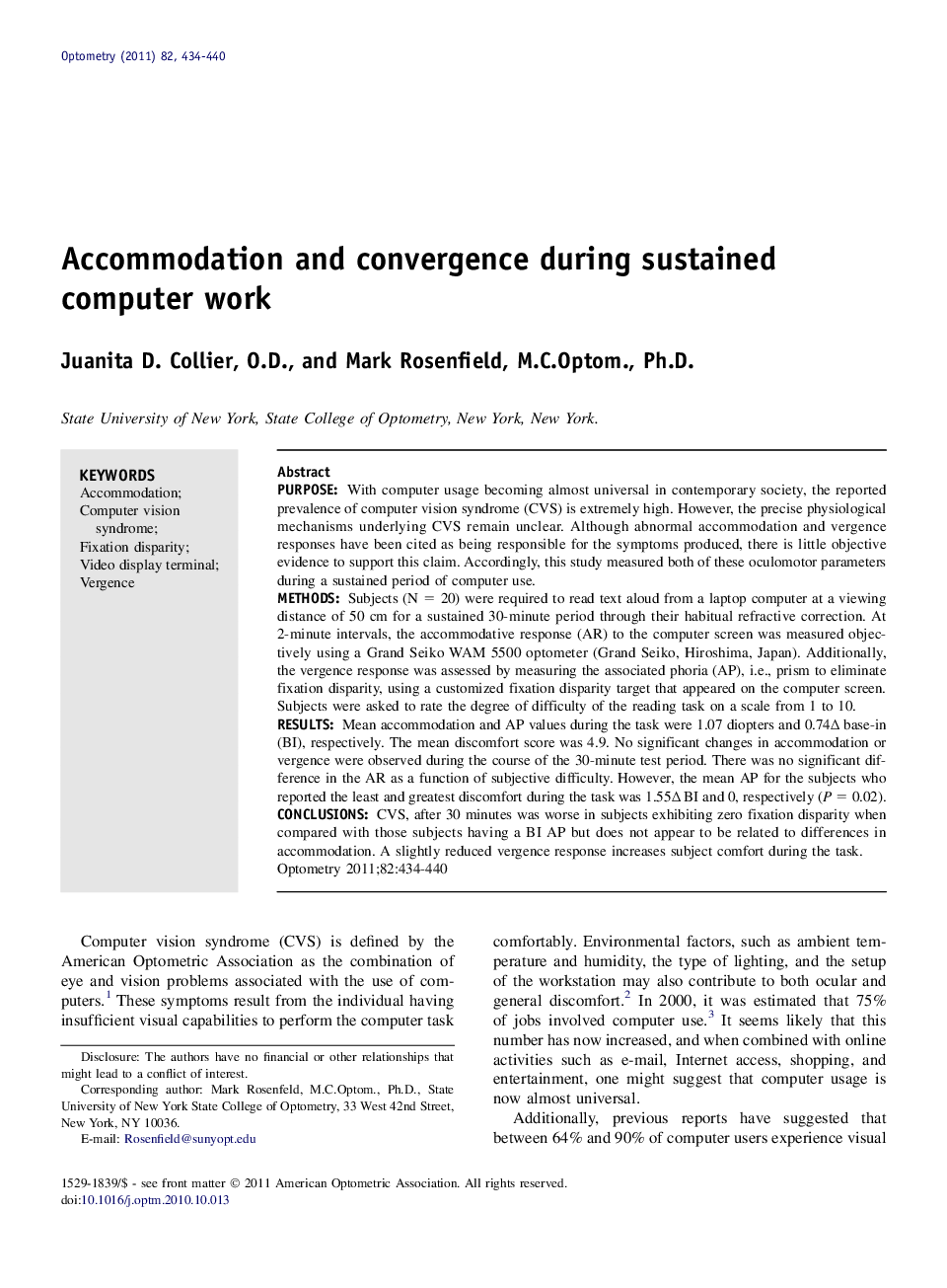| Article ID | Journal | Published Year | Pages | File Type |
|---|---|---|---|---|
| 2696626 | Optometry - Journal of the American Optometric Association | 2011 | 7 Pages |
PurposeWith computer usage becoming almost universal in contemporary society, the reported prevalence of computer vision syndrome (CVS) is extremely high. However, the precise physiological mechanisms underlying CVS remain unclear. Although abnormal accommodation and vergence responses have been cited as being responsible for the symptoms produced, there is little objective evidence to support this claim. Accordingly, this study measured both of these oculomotor parameters during a sustained period of computer use.MethodsSubjects (N = 20) were required to read text aloud from a laptop computer at a viewing distance of 50 cm for a sustained 30-minute period through their habitual refractive correction. At 2-minute intervals, the accommodative response (AR) to the computer screen was measured objectively using a Grand Seiko WAM 5500 optometer (Grand Seiko, Hiroshima, Japan). Additionally, the vergence response was assessed by measuring the associated phoria (AP), i.e., prism to eliminate fixation disparity, using a customized fixation disparity target that appeared on the computer screen. Subjects were asked to rate the degree of difficulty of the reading task on a scale from 1 to 10.ResultsMean accommodation and AP values during the task were 1.07 diopters and 0.74∆ base-in (BI), respectively. The mean discomfort score was 4.9. No significant changes in accommodation or vergence were observed during the course of the 30-minute test period. There was no significant difference in the AR as a function of subjective difficulty. However, the mean AP for the subjects who reported the least and greatest discomfort during the task was 1.55∆ BI and 0, respectively (P = 0.02).ConclusionsCVS, after 30 minutes was worse in subjects exhibiting zero fixation disparity when compared with those subjects having a BI AP but does not appear to be related to differences in accommodation. A slightly reduced vergence response increases subject comfort during the task.
